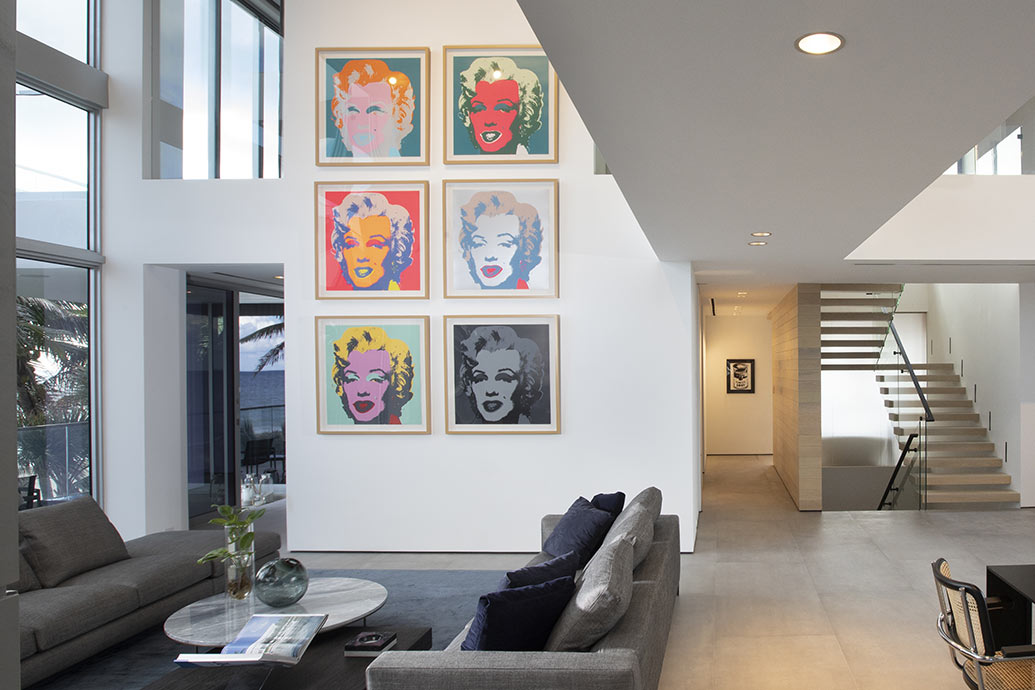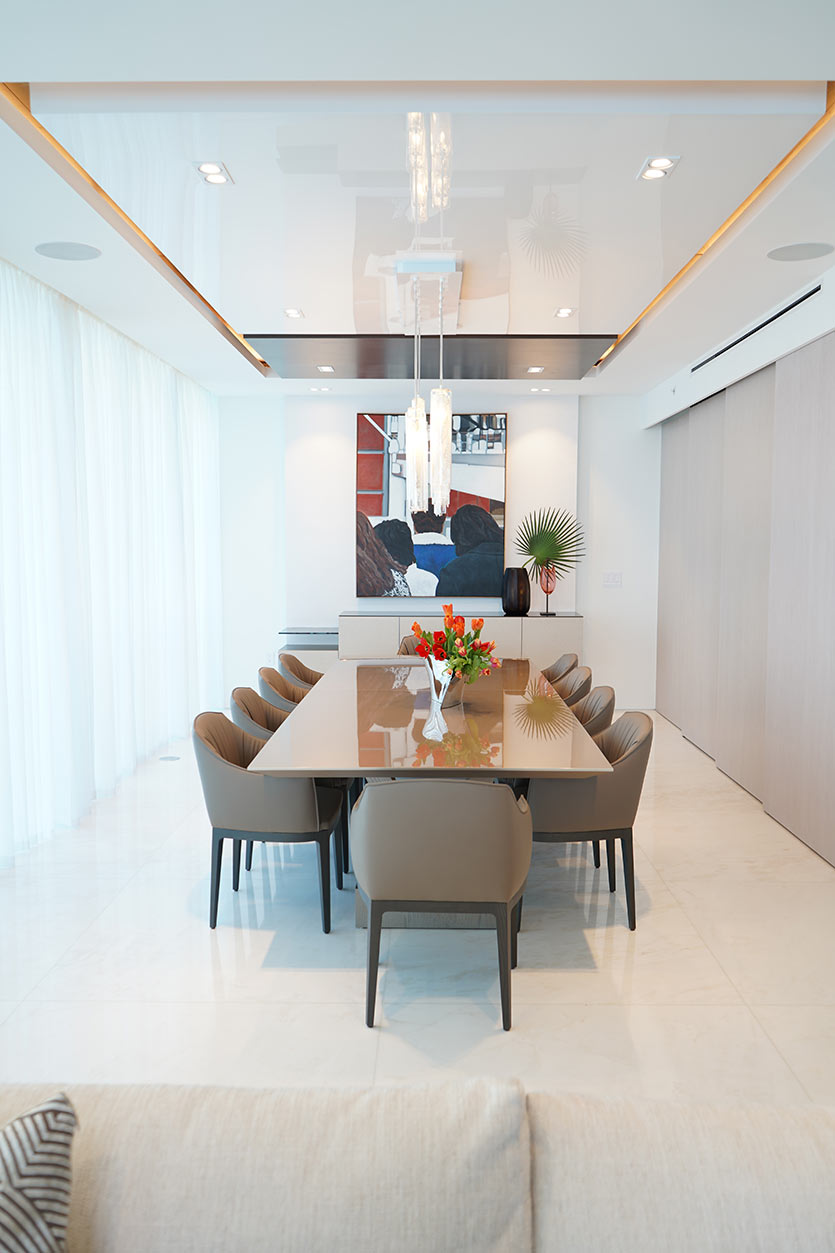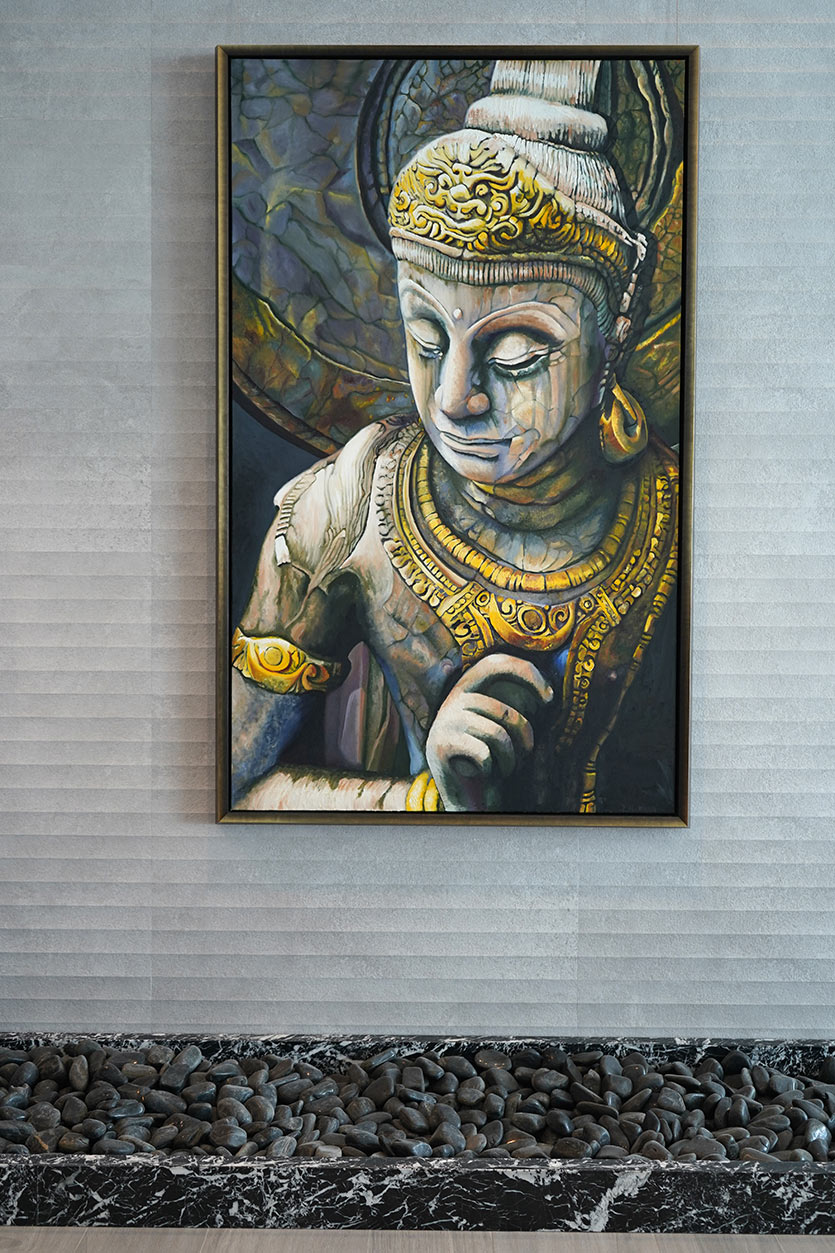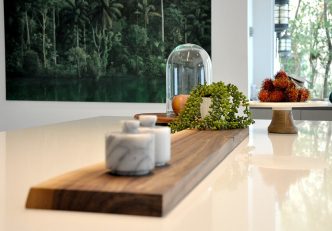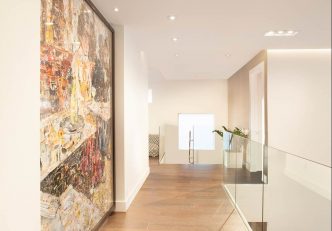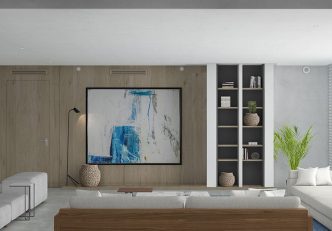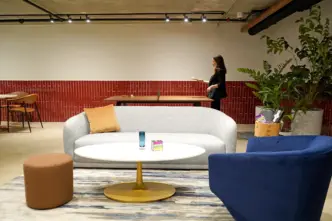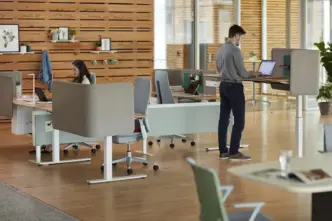Art and Interiors: Creative Ways to Display Your Favorite Pieces
Today, let’s talk about the relationship between art and interiors! You might already know the importance and benefits of incorporating art into your home interiors. Art infuses personality and character to a space in a very unique way, adding strong personal statements and a feeling of home to your interior spaces.
Art is more than just canvas paintings and art prints. Contemporary art includes: photographs, sculptures, found objects, etc. Because of the colors, forms and textures art features, it has a great visual impact on an interior space. Therefore, it is an amazing design opportunity for our creative team to tie a room together.
Our Miami interior designers love to help clients display their art collections. But our designers go beyond picking out pieces themselves from collections. They guide our clients to find creative ways to display their favorite artwork. Yes, we are referring to the art of “placement art”!
Do you need inspiration on how to display artwork at home? Here are a few creative ways our interior design team have displayed art into different residential projects. Let’s take a look!
ART AND INTERIORS
LEAN IT FOR AN INTERESTING LAYERED LOOK
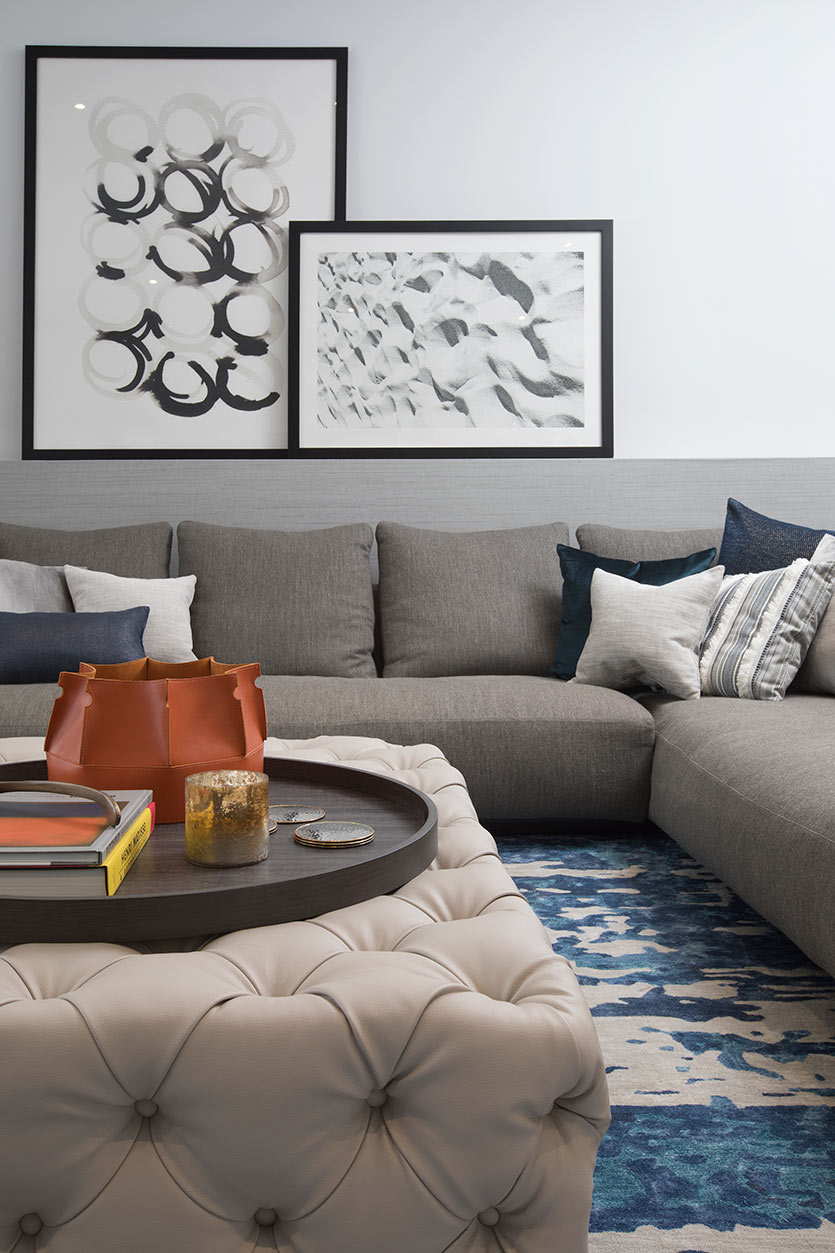
This is probably the most fashionable way to present art in interiors nowadays. Our DKORistas love to use this technique as it feels very organic and thoughtless almost. Sometimes, having frames or paintings simply hung up on a wall can feel a little too expected and frankly boring.
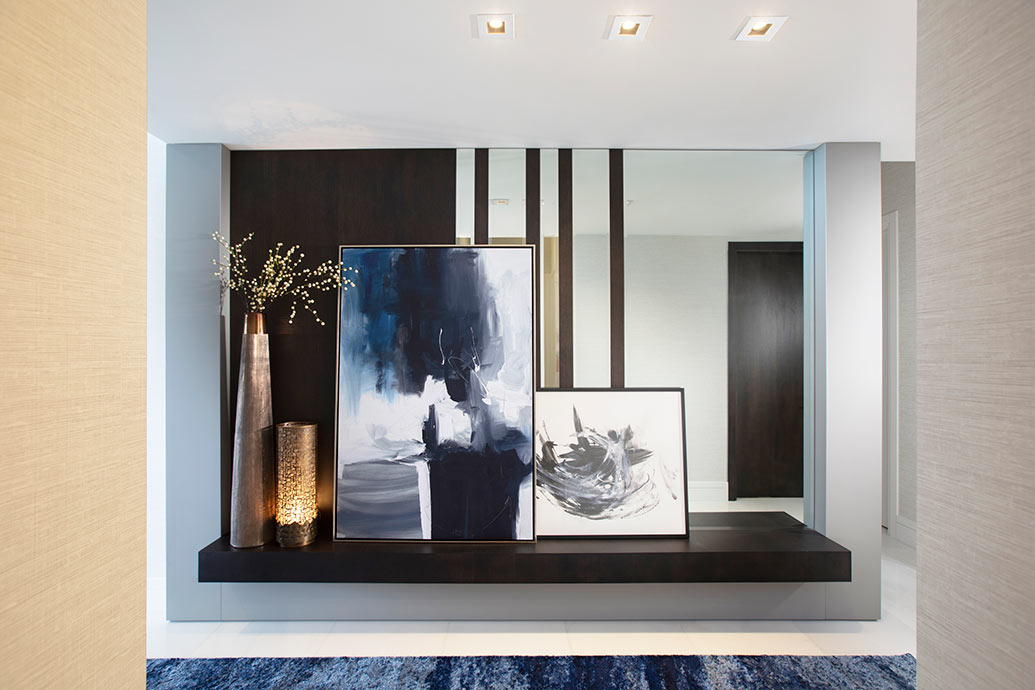
Find a horizontal surface, or create it by installing a ledge or floating shelf, and try this at home! Leaning and layering your pieces will add a little movement and depth to the composition, while still feeling effortless.
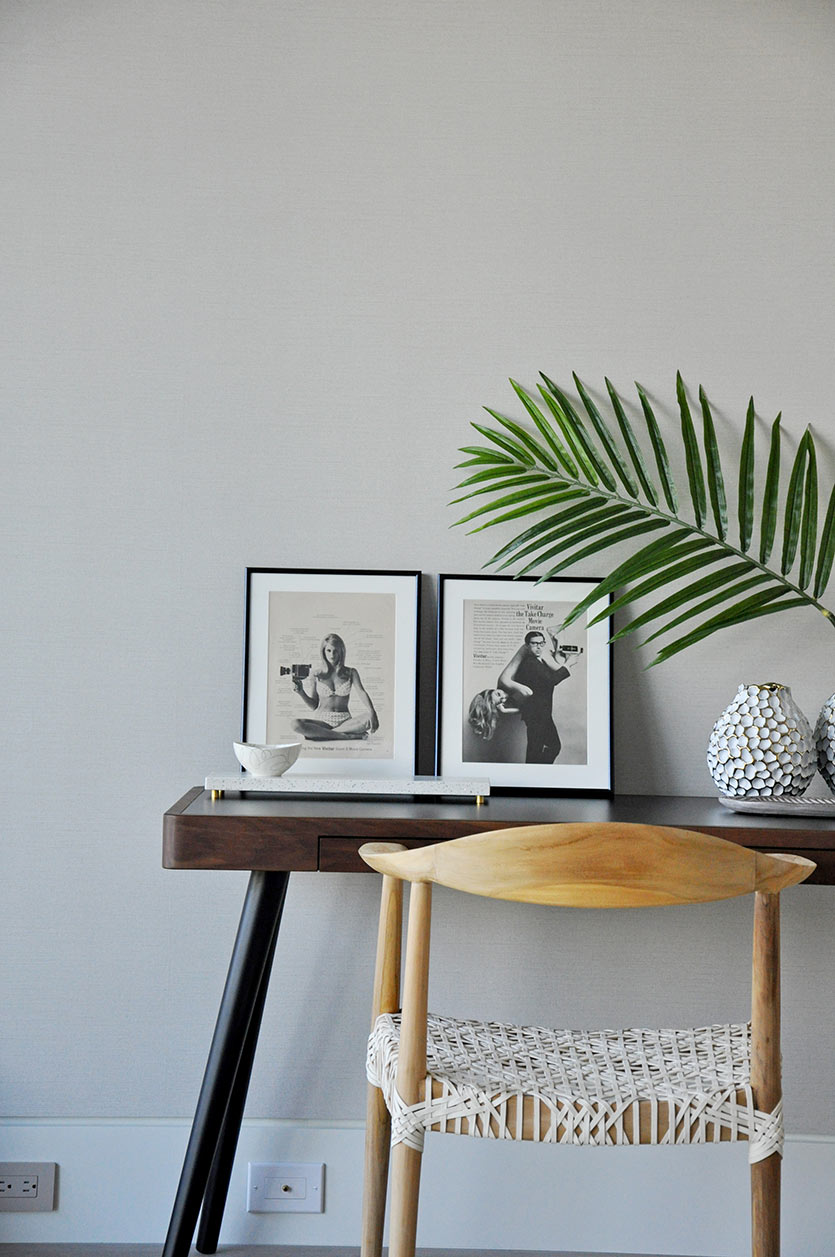
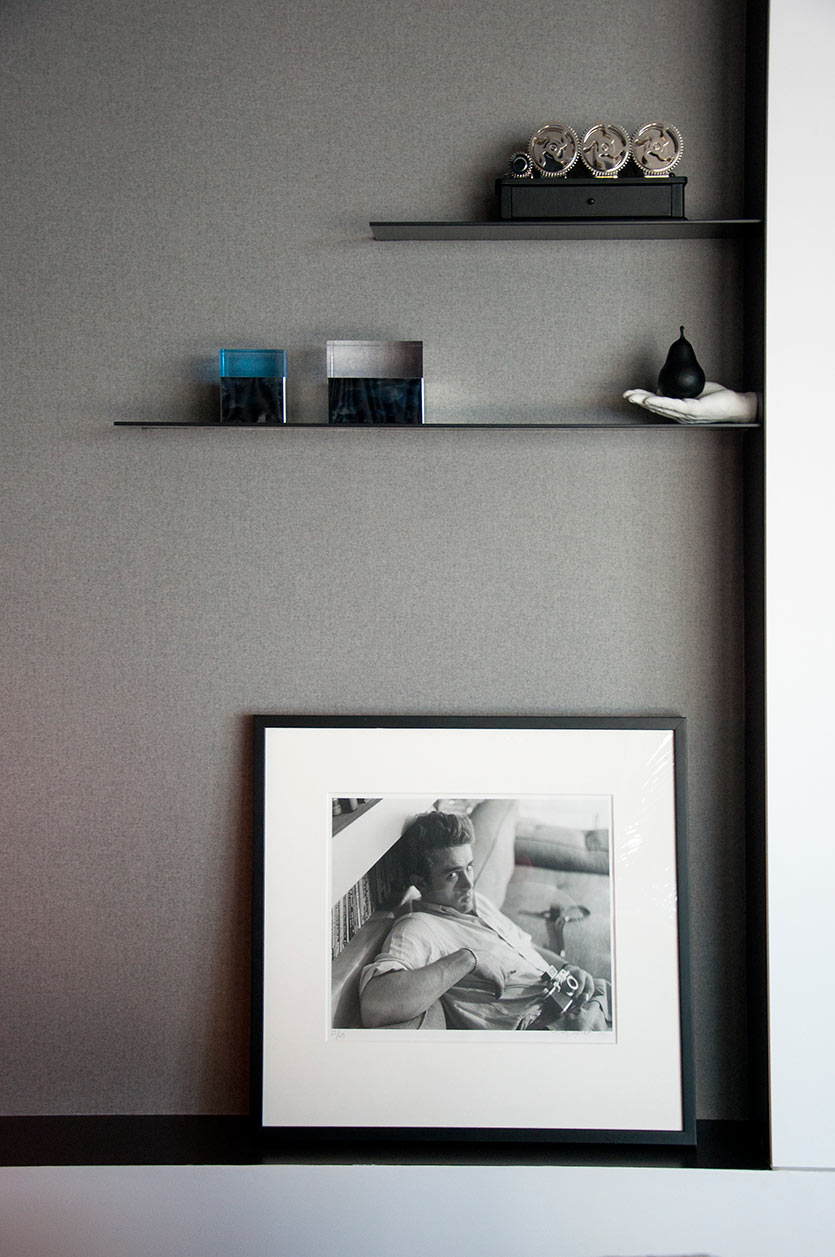
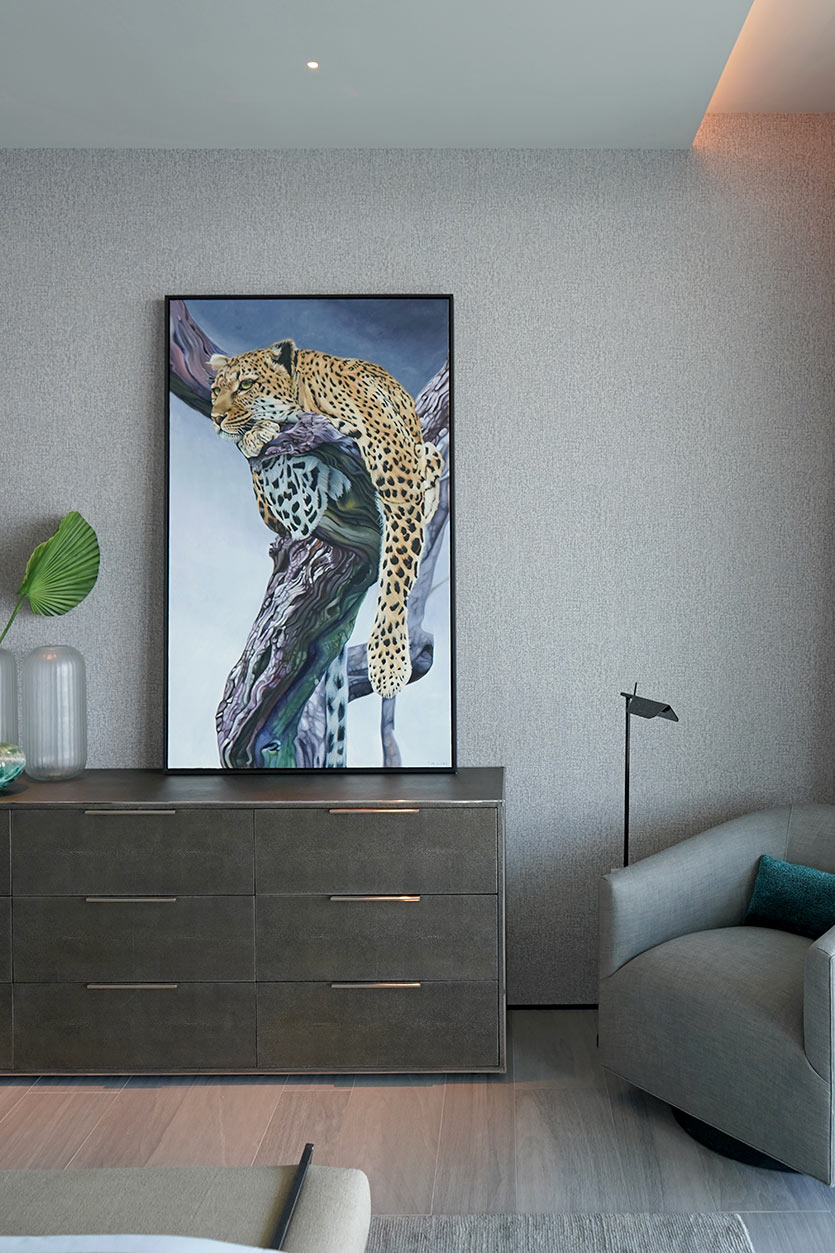
Our design team adds that with this technique, you can accent a beautiful furniture piece, such as a desk or console, instead of highlighting a wall. The leaning art, on the furniture piece will create an ensemble, what we call a “vignette”. These often help create focal points in a room, hence bringing users attention to the furniture piece.
GROUPING (MULTIPLE PIECES OF ART TO MAKE A BIG IMPACT)
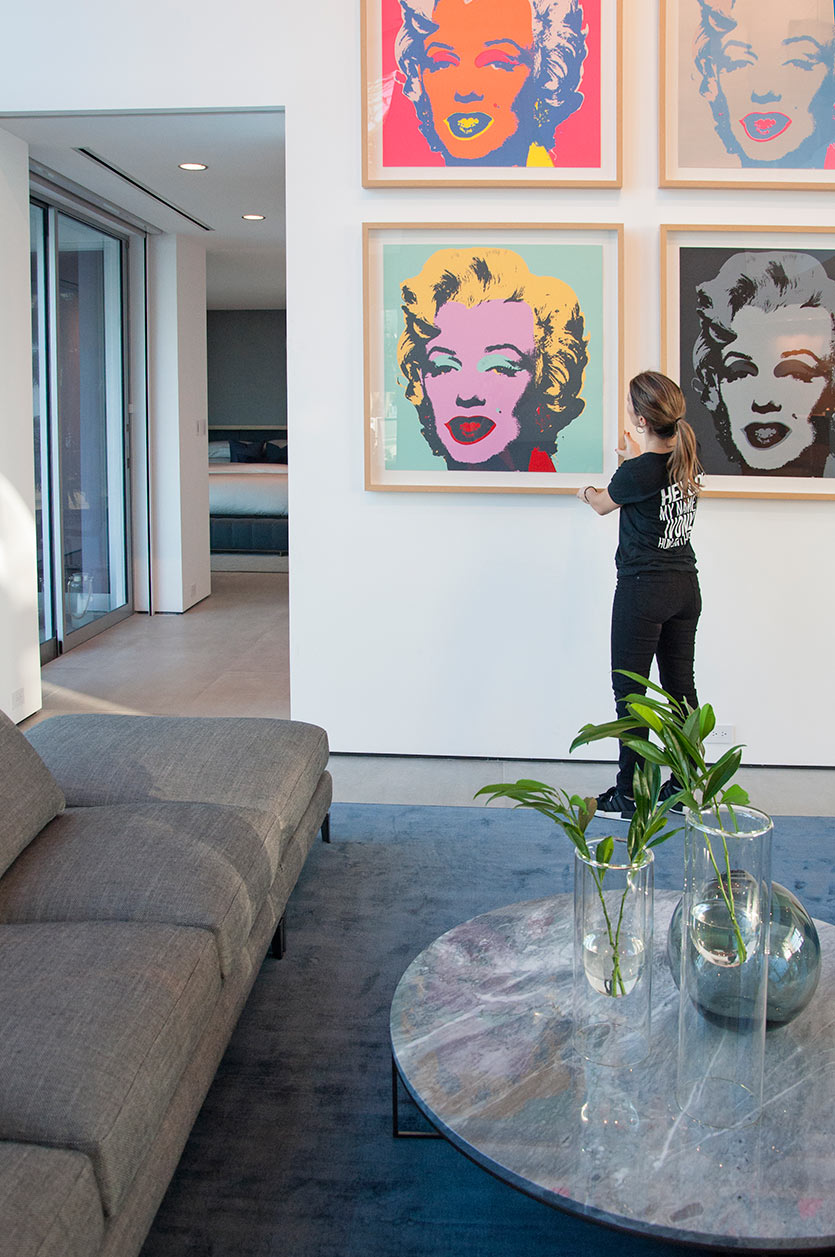
This technique is often used to create one large artwork with smaller pieces placed together. The perfect example is in our “Fort Lauderdale Oceanfront Retreat” project; where you see we used our clients wonderful Marilyn Monroe collection on a huge wall. See below how we created one large composition. Our designers could have filled the wall with one large piece instead. Although, having several items placed like this adds so much more rhythm and interest.
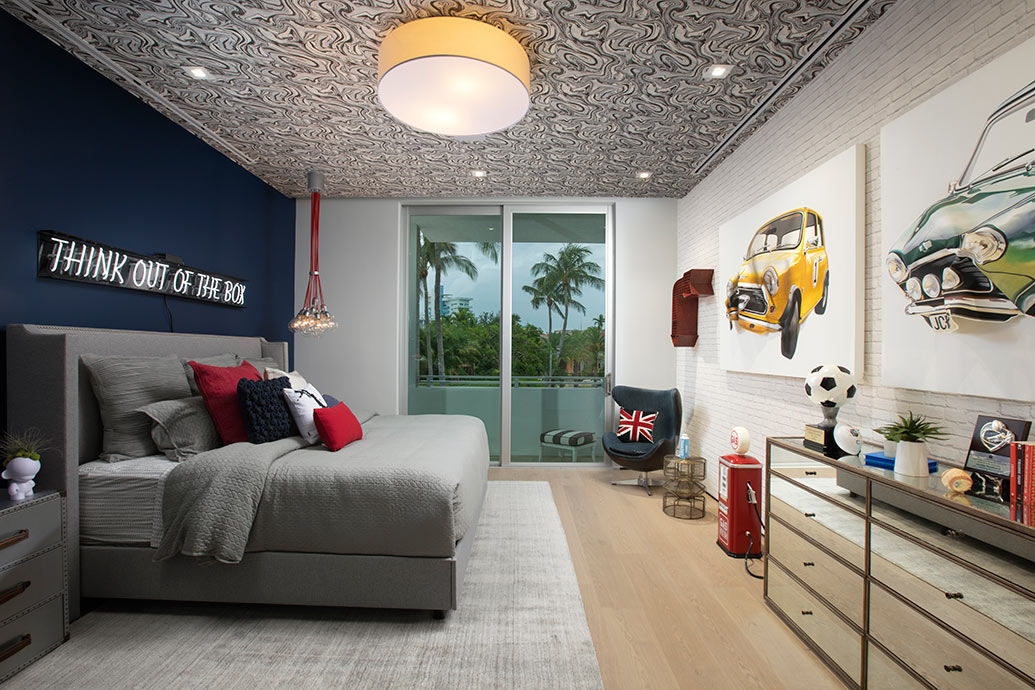
Remember this technique works especially well when the artwork are from the same collection, or have connections somehow. The connection can be a color, a type of media, or any other item that connects one piece to the next.
ART INTEGRATED IN DESIGN FEATURE
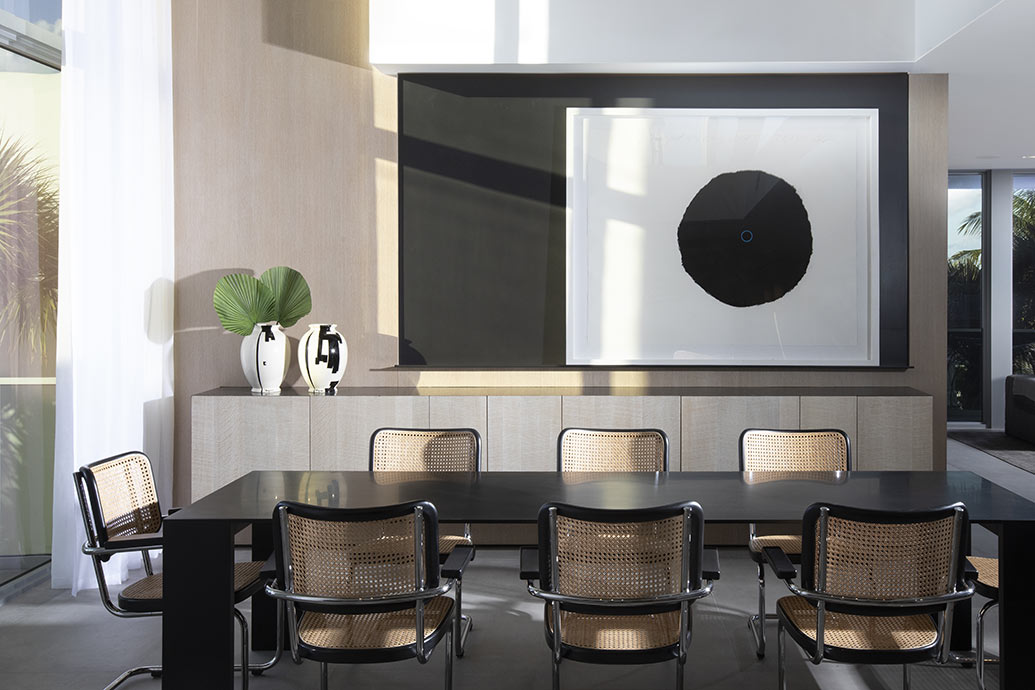
Our design team often designs accent walls with artwork in mind. Sometimes, the artwork is the starting point for the design. Look at this hallway for example. The piece of art was integrated into the architecture of the space to become its own design feature.
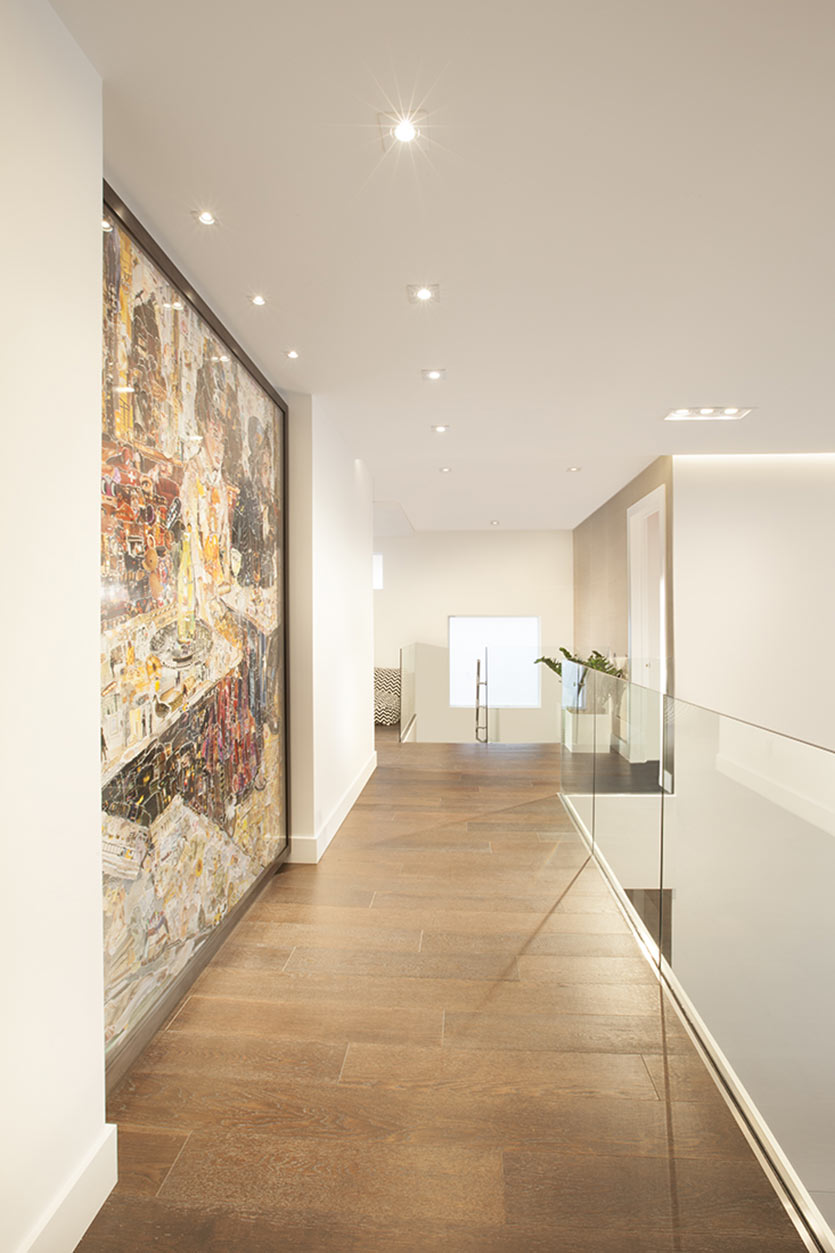
At our other project, the dining wall was designed with a black picture ledge and large black backdrop to display our clients artwork. Without art here, the design feature is not complete.
ART AS FOCAL POINT
This technique could be the most obvious. We have used it extensively in our projects, because it simply works beautifully. Sometimes artwork needs to speak for itself and does not need to be integrated. Find a focal point in the room and hang your frame or painting there, watch it take up the space and add character to the entire space! Many times, less is more!
USING PEDESTAL TO RAISE ART
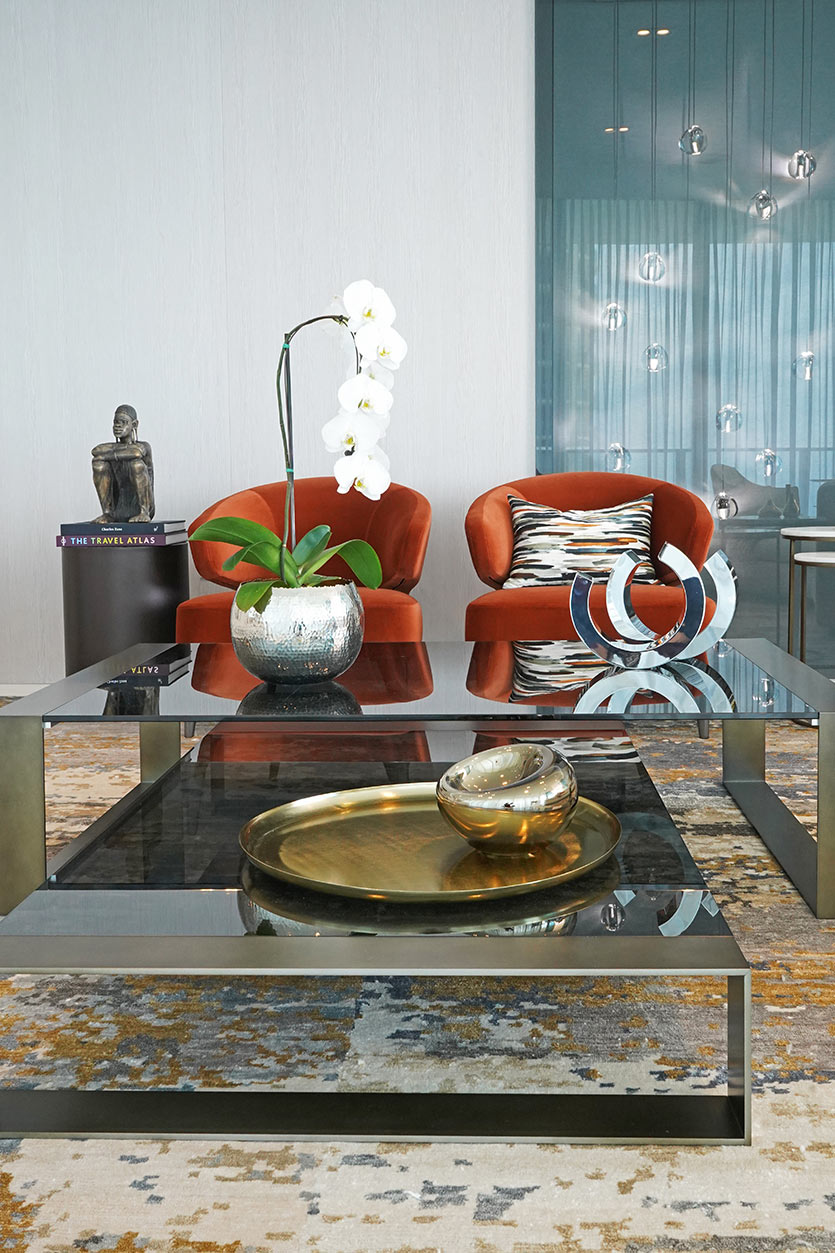
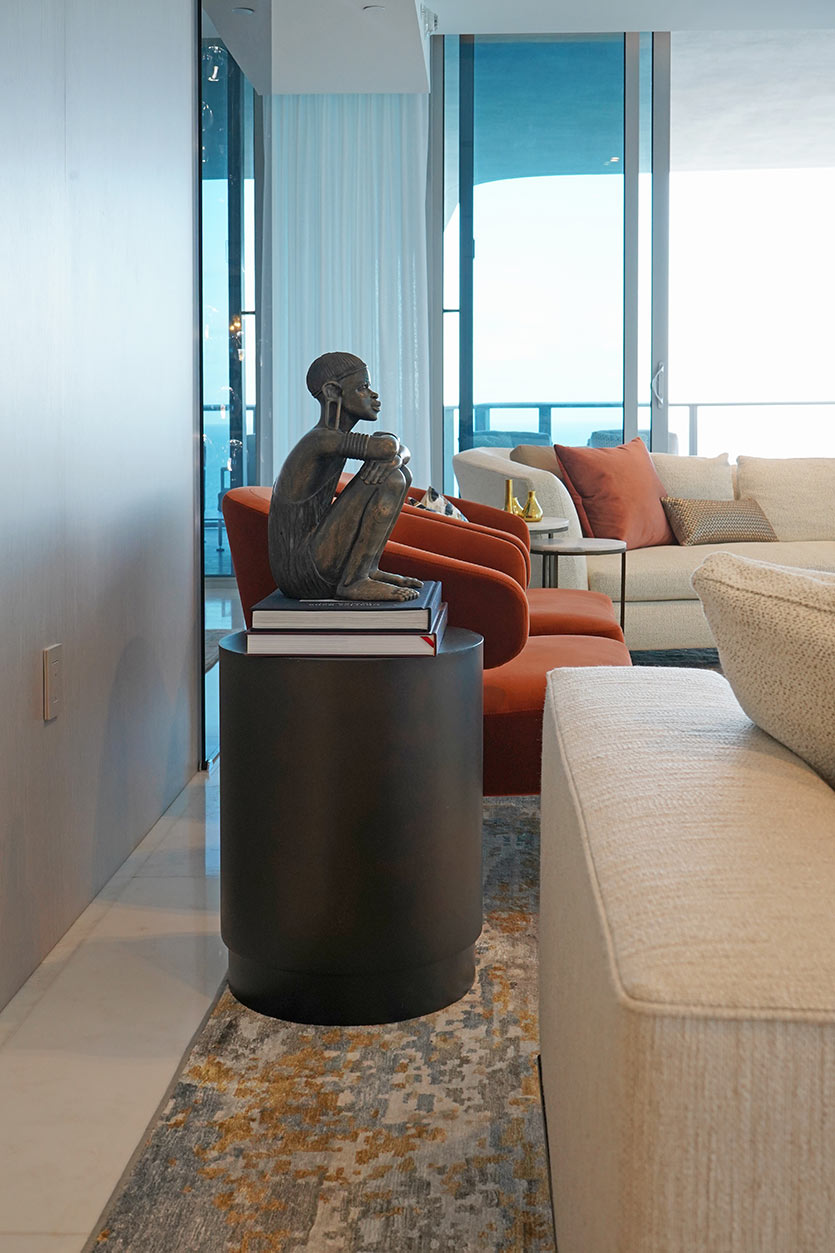
Placing art pieces on pedestals is the best way to highlight smaller 3D objects. Of course, large sculpture also look great on a pedestal though! Our designers remind us that the pedestal needs to be thought out and can actually be used as a design element!
Pedestals can be found now in many furniture stores, and come in various materials. Not only will pedestals raise your art so that it is closer to eye level, but they can also bring a touch of interest. Indeed, try a metal one like in our examples to add an industrial and “found object” feeling to your interior. Or go with a wood stump to make it feel more organic.
Another element to work with is the size and shape. Our designers often use pedestals of different height grouped together. But they also love the bold effect of using two exact same pieces next to each other. Basically, the key is to be playful with pedestals!
HANGING ART: CREATING AN ART GALLERY EFFECT
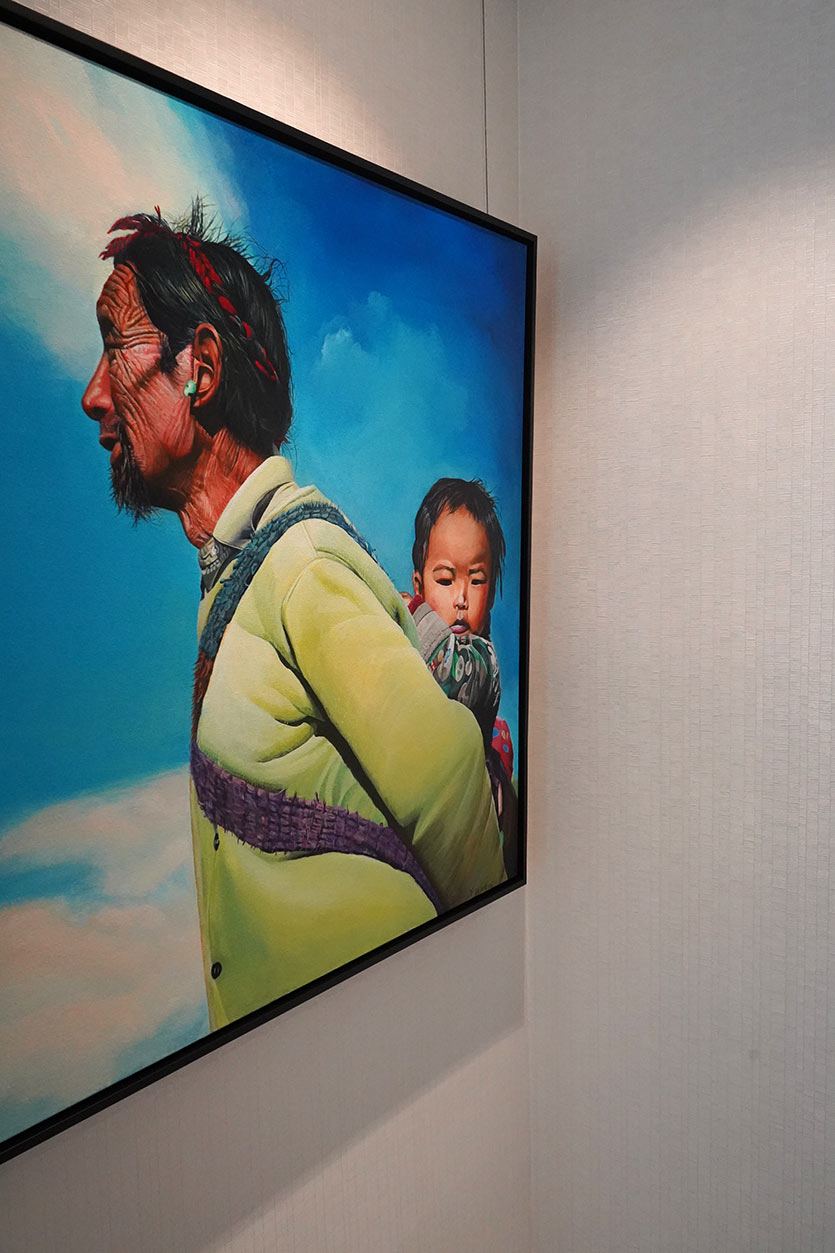
Recently we have worked with a client who was himself an artist. He asked our team to find a flexible way to display his pieces throughout the apartment. Our interior designers offered him the same system that art galleries use: hanging art with cables.
The way this works is that there is a track fixed to the very top of the wall. From there, hangs thin cables that you can move along the track, in order to place the art where you want on the wall. This system is extremely flexible; you may add or remove artwork without damaging any walls.
We love this way of displaying art. It feels light and airy. Art galleries have used this system for a long time and it looks extremely professional.
MIXING ART FORMATS (PAINTINGS AND OBJECTS)
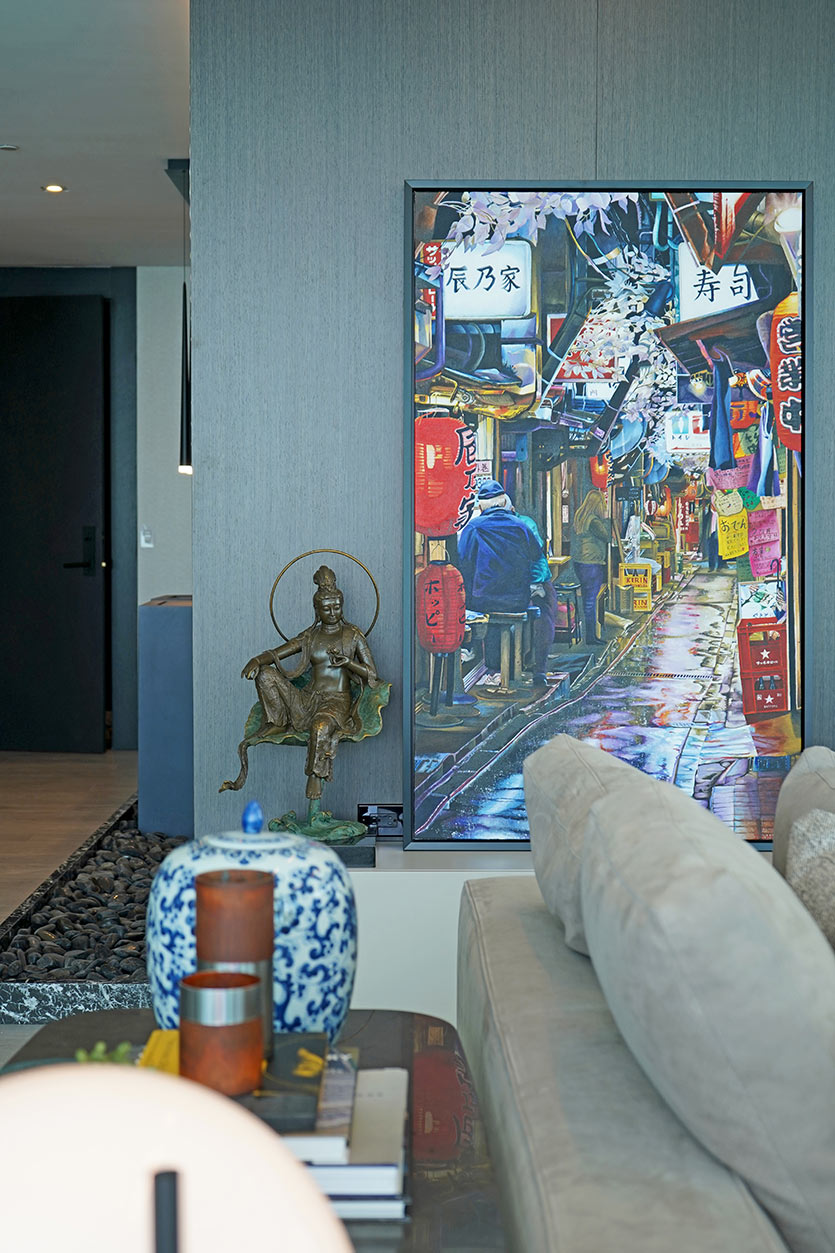
It seems we have talked either about how to display photos and paintings or 3D objects. Nevertheless, you can also choose to connect them. Take a look at this composition we designed for a client. Combining art pieces, some flat, some with volumes and layering them will create an amazing design statement.
Our designers do love when there is a connection between pieces, but that is not necessary to create an interesting vignette. Be creative and bold to see what happens, have fun with your arrangement: that’s the key!
Regardless of how you decide to showcase your art, our interior design team recommend that you always consider three elements: composition, scale and balance.
Find an interesting combination of elements, take a step back, look at it and see how you feel. Make sure that the sizes of the different art pieces talk to each other, and do not overpower one another.
In the end, art is subjective, and there is no right way to display it. We believe that it is more about the feeling it gives you and your family. If you love it and embrace it, everyone else will!
We hope these ideas inspired you on how to display that piece you love, because what’s the point of having that amazing artwork if you don’t showcase it !?
Related Posts
How Artwork Enhances Modern Interior Designs
There are two main ways DKOR interior designers like to integrate our clients’ art collections, whether paintings, photography or other…
Benefits of Incorporating Art into Your Home Interiors
Art is found everywhere in Miami this week as Art Basel arrives into town! Each December Floridians get into the…
Bal Harbour Condo Design: Incorporating Our Clients’ Collections
Recently, we shared the one-of-a-kind design concept for our Bal Harbour Condo project: the journey of light. Throughout the Bal…


